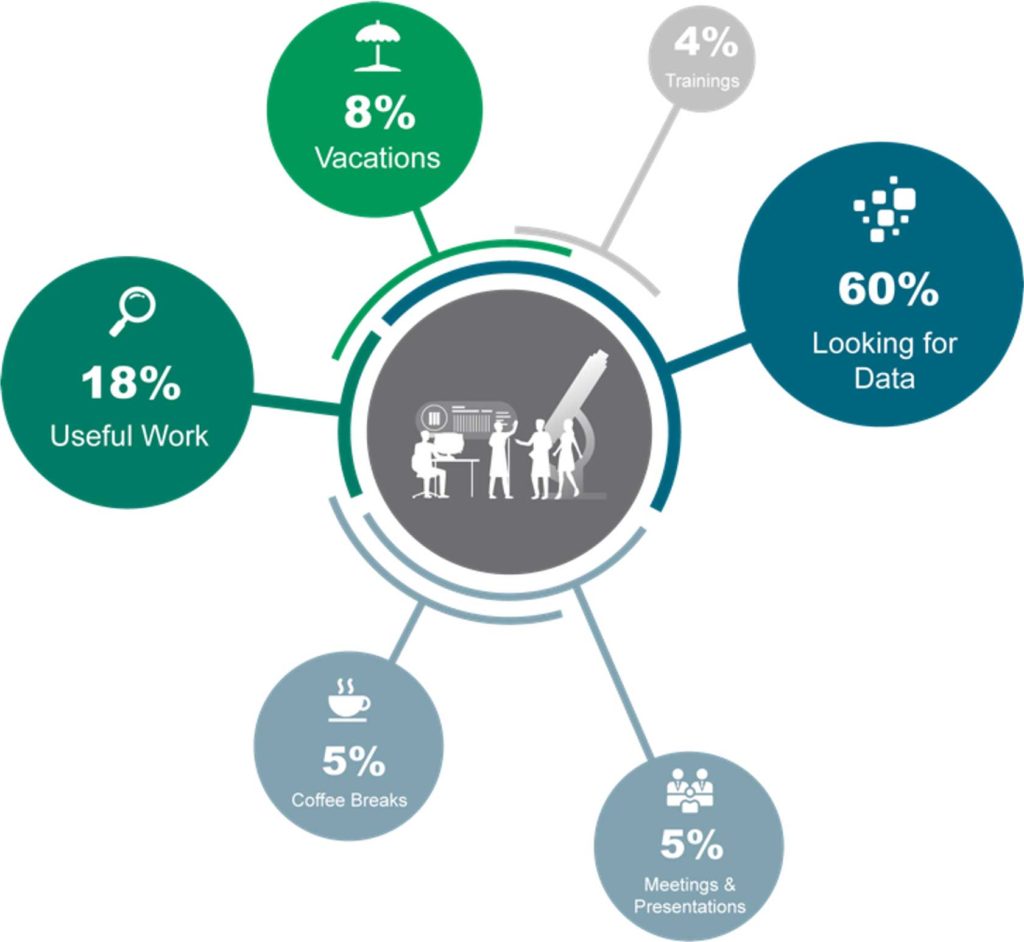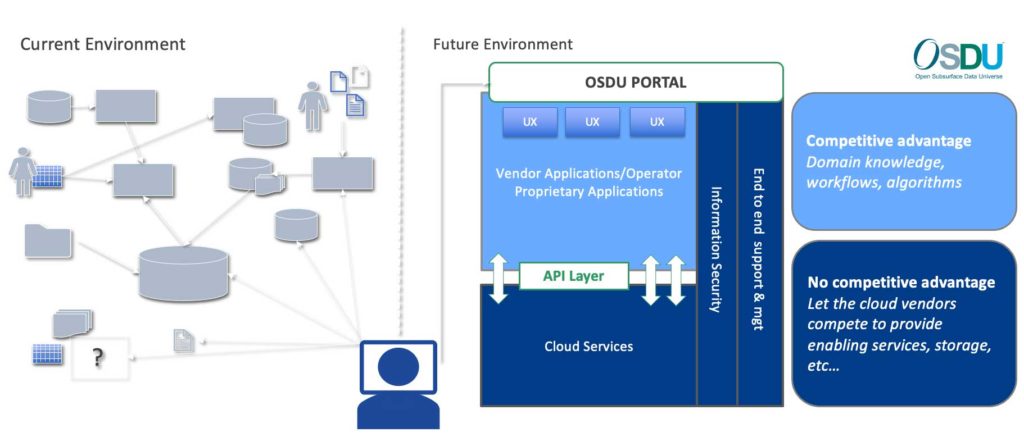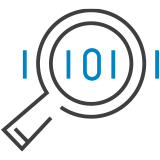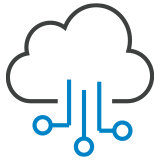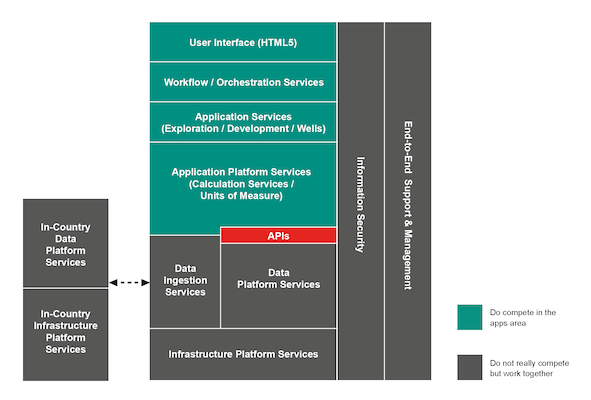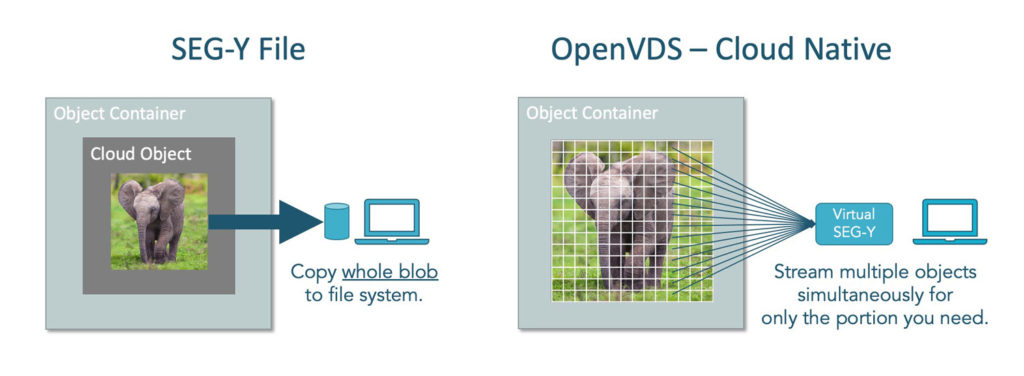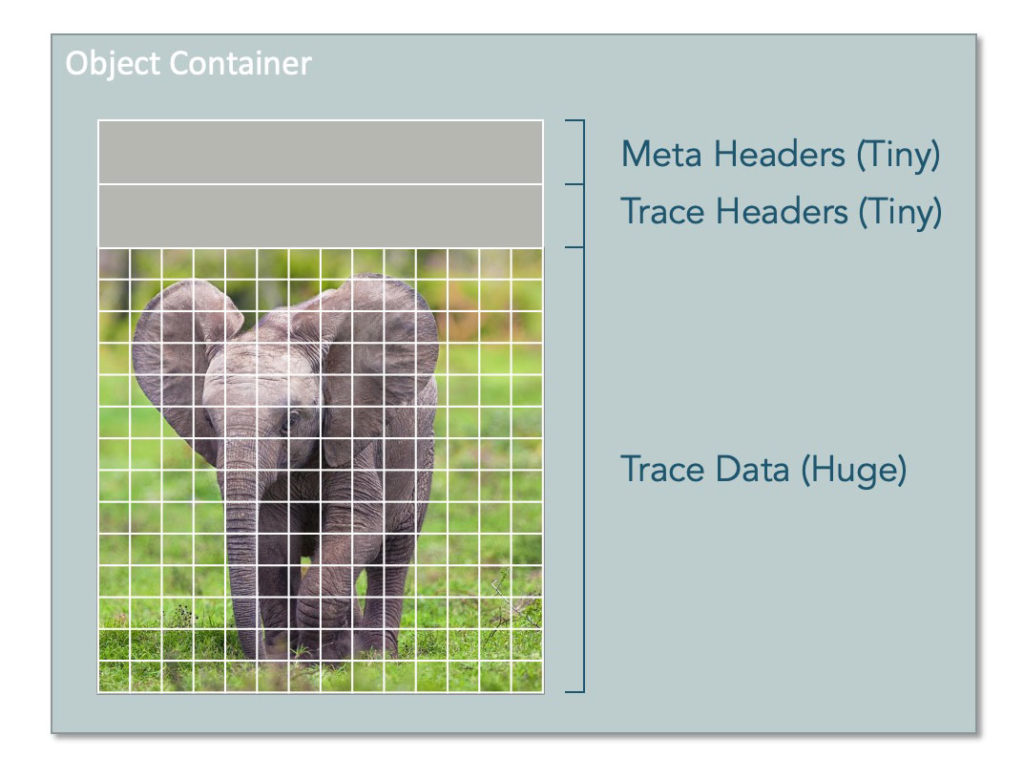The latest version of INT’s data visualization platform, IVAAP, integrates with IBM Open Data for Industries, IBM’s hybrid cloud implementation of the Open Group OSDU data.
HOUSTON, TX — April 15, 2021 — INT today announced that IVAAP — a leading enterprise subsurface data visualization platform — integrates with IBM Open Data for Industries for Cloud Pak for Data built on Red Hat OpenShift. These open technologies will enable the upstream industry to visualize exploration and drilling data across hybrid cloud environments to drive efficiencies and speed decision making.
As the oil and gas industry undergoes unparalleled transformation, members of the value chain are seeking solutions to maximize digital opportunities across their operations. Data is a critical asset and when leveraged with artificial intelligence, can yield mission-critical insights and competitive advantage. However, quite often, domain-specific data exists in silos — limiting workflow efficiencies that leverage data insights for real-time decision-making.
Today’s announcement focuses on open technologies for the IVAAP platform that remove these barriers:
- IVAAP leverages IBM Open Data for Industries for IBM Cloud Pak for Data, a data platform enabling seamless integration of data sources with the flexibility to deploy across any infrastructure that leverages The Open Group OSDU Forum data standard. The Open Group OSDU Forum is an industry organization that brings together technology leaders, producers and members of the oil and gas value chain to build a data foundation based on data standards making subsurface data easier to find, combine, and use across geoscience workflows.
- IVAAP integrates with IBM Open Data for Industries for IBM Cloud Pak for Data powered by Red Hat OpenShift, the industry’s leading open source Kubernetes platform. This will enable INT customers to run IVAAP on-premise, unlocking speed and agility for local operations as well as remote locations through the cloud, yet all with one consistent architecture. This provides upstream operators greater value and flexibility for real-time operational decision-making, as well as consistency to the enterprise operations.
“We are extremely excited about the work we are engaging in with The Open Group OSDUTM Forum and our collaboration with IBM. For clients who manage hybrid cloud environments, our goal is to bring the technology to where they need it — in the cloud and in their locally hosted environment.”
— Olivier Lhemann, President of INT.
“Our collaboration with INT enables choice and flexibility in deploying subsurface data visualization across hybrid cloud environments. By leveraging IBM Open Data for Industries for IBM Cloud Pak for Data, INT and the oil and gas community can leverage an enterprise-grade, open-source platform based on the OSDU data foundation, improving access to subsurface data across any infrastructure, including public cloud, local country cloud and on-prem,” says Dariusz Piotrowski, Global Solutions Leader,
IBM Industrial Sector.
IVAAP is a sophisticated domain visualization and analytics platform that provides central access to data regardless of where it is — stored in the cloud and on-premise. Users can access, view, search, visualize, and analyze their subsurface data — wellbore, seismic, schematics, log, and more — in a web browser.
About INT:
INT software empowers the largest Oil & Gas (IOC/NOC) and services companies in the world to visualize their complex subsurface data (seismic, well log, reservoir, and schematics in 2D/3D). INT offers a visualization platform (IVAAP) and libraries (GeoToolkit) developers can use with their data ecosystem to deliver subsurface solutions (Exploration, Drilling, Production). INT’s powerful HTML5/JavaScript technology can be used for data aggregation, API services, high-performance visualization of G&G and petrophysical data in a browser. INT simplifies complex subsurface data visualization.
Read the press release on PRWeb.
For more information about IVAAP or INT’s other data visualization products, please visit https://int.flywheelstaging.com.
INT, the INT logo, and IVAAP are trademarks of Interactive Network Technologies, Inc., in the United States and/or other countries.
Red Hat, the Red Hat logo and OpenShift are trademarks or registered trademarks of Red Hat, Inc. or its subsidiaries in the U.S. and other countries.
